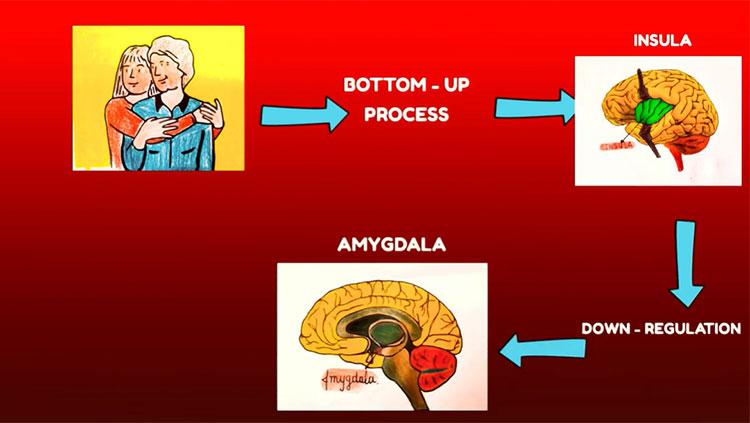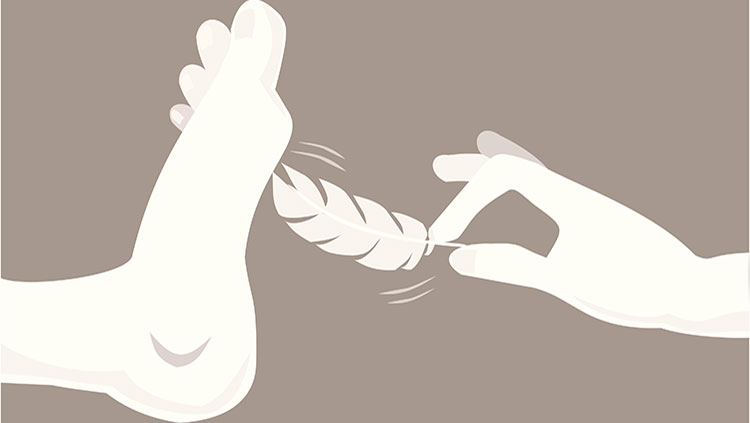A Mind About Touch
- Published18 Oct 2013
- Reviewed18 Oct 2013
- Source BrainFacts/SfN
Every day, you experience the world with your senses. How does your brain respond when a fly lands on your arm? Though you brush the fly away almost instantly, the way your brain processes this sensory information is actually quite complex. In this video submitted for the 2013 Brain Awareness Video Contest, Pomona College student Sydney Brown uses cartoons and drawings to explain how the sense of touch travels through the brain.
CONTENT PROVIDED BY
BrainFacts/SfN
Transcript
Every day we experience the world using our senses. We touch and see and hear and taste and smell and all that information is sent along nerves to the big lump of grey matter in our heads that we call a brain. But why does any of this matter in the first place? Life as we know it is nothing more than our brain's chemical and electrical interpretation of the signals it receives. Your eyes respond to light, your ears to sound waves, your nose to chemicals in the air, but your brain only responds to a converted electrical signal that it receives from your senses.
Allow us to start with a quick overview: the only way for sensations from the outside world to reach your brain is via cells called neurons. Neurons conduct an electrical signal along a long projection to a junction, or synapse, with another neuron. The electrical signal is known as an action potential, and the long projection along which this signal travels is known as the axon.
All information from our senses is accumulated by sensory receptors, which are part of a group of nerves collectively called the peripheral nervous system. The peripheral nervous system includes all the nerves but our brain and spinal cord, which form what's called the central nervous system. Sensory nerves send the information you sensed to the spinal cord and brain, where it is processed. Once the central nervous system has processed the information, a response gets sent back out along motor nerves, another part of the peripheral nervous system.
And that brings us to our first sense—touch. There are four different sensory neuron endings called receptors involved in touch: Pacinian corpuscles, which respond to pressure and vibrations, Meissner's corpuscles, which are sensitive to light touch, Ruffini's endings, which activate in response to slow vibrations, and Merkel's disks, which give information about pressure and texture. These four sensory receptors are part of a group called mechanoreceptors, which are activated when the end of the neuron is deformed, sending an action potential, the electrical signaling mechanism, racing to the brain. Free nerve endings are mechanoreceptors that activate in response to severe pressure, heat, inflammation, or chemical stimuli, resulting in a sensation of pain. All in all, these sensory receptors tell the brain that something's there.
So let's say a bug lands on your arm. How do you know it's there? Even a touch as light as a bug's will activate the mechanoreceptors of our sense of touch. The action potential races along the nerve until it reaches the end. The next neuron is so close, less than a hair's width away across the synapse, but the action potential can't jump that gap. Neurons are like wires: the action potential could only reach the next neuron if they were touching. So then what? We want the signal to get to our brain so we can respond and flick the bug off before it bites us. Here is the tricky part. When the action potential reaches the end of the nerve, chemicals called neurotransmitters are released across that tiny gap, so that a new action potential is created in the next neuron and the signal can pass to the spinal cord and be fast tracked to the brain.
Now, the brain can be quite organized. All the touch signals from all over the body are sent to one specific region called the somatosensory cortex. Instead of all the touch signals being jumbled up in the brain, our entire body is mapped out in the somatosensory cortex, on what's called a somatotopic map, just like this. Here are our feet and hands and face and even throat.
Right, you can sense a bug landing on your arm, but what if two land right next to each other? [Hello] How can we tell there is more than one? These touch receptors can discriminate between two points on your arm that are only a few centimeters apart, sometimes even less.
Even with these amazing touch receptors, maybe you don't notice the bug, or maybe you choose to ignore it. And then it bites you. Now it's got your attention! The pain you feel is recognized by different receptors than touch, transmitted using different nerves, and sent along a different path to the brain. You ever have that knee-jerk reaction when you stub your toe or step on a tack? You pull your foot back before you even think about it. That signal is completely skipping the brain, taking the express route called the spinal reflex arc through the spinal cord then straight back out to your leg to get away from the cause of pain quickly. It's only after you jump away that you realize you're hurt.
The sensation of pain is detected by pain receptors called nociceptors. There are thermal nociceptors that are activated by harmful hot or cold temperatures, chemical nociceptors that are activated by chemical irritants like capsaicin in spicy food, and mechanical nociceptors that are activated by excessive pressure. Some nociceptors can be activated by all three stimulants and some aren't activated by any at all.
This entire complex structure exists so that a pressure, temperature, or chemical stimulant can trigger an action potential to be sent along nerves to reach the brain where the information can be processed so that we can feel the world around us.
Also In Touch
Trending
Popular articles on BrainFacts.org

















